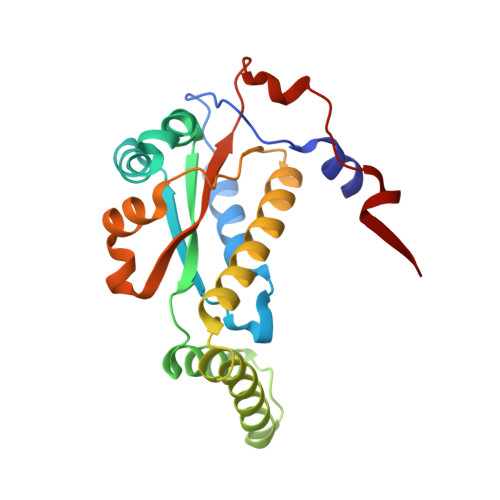Structures of nitroreductase in three states: effects of inhibitor binding and reduction.
Haynes, C.A., Koder, R.L., Miller, A.F., Rodgers, D.W.(2002) J Biological Chem 277: 11513-11520
- PubMed: 11805110
- DOI: https://doi.org/10.1074/jbc.M111334200
- Primary Citation of Related Structures:
1KQB, 1KQC, 1KQD - PubMed Abstract:
The crystal structure of the nitroreductase enzyme from Enterobacter cloacae has been determined for the oxidized form in separate complexes with benzoate and acetate inhibitors and for the two-electron reduced form. Nitroreductase is a member of a group of enzymes that reduce a broad range of nitroaromatic compounds and has potential uses in chemotherapy and bioremediation. The monomers of the nitroreductase dimer adopt an alpha+beta fold and together bind two flavin mononucleotide prosthetic groups at the dimer interface. In the oxidized enzyme, the flavin ring system adopts a strongly bent (16 degrees ) conformation, and the bend increases (25 degrees ) in the reduced form of the enzyme, roughly the conformation predicted for reduced flavin free in solution. Because free oxidized flavin is planar, the induced bend in the oxidized enzyme may favor reduction, and it may also account for the characteristic inability of the enzyme to stabilize the one electron-reduced semiquinone flavin, which is also planar. Both inhibitors bind over the pyrimidine and central rings of the flavin in partially overlapping sites. Comparison of the two inhibitor complexes shows that a portion of helix H6 can flex to accommodate the differently sized inhibitors suggesting a mechanism for accommodating varied substrates.
- Department of Molecular and Cellular Biochemistry, The University of Kentucky, Lexington, Kentucky 40536, USA.
Organizational Affiliation:

















